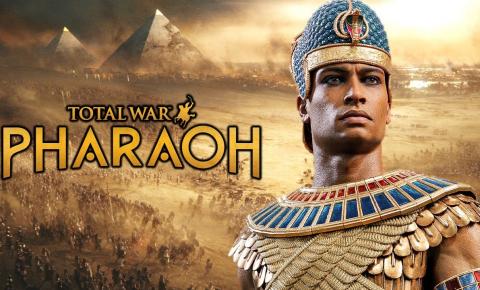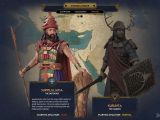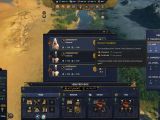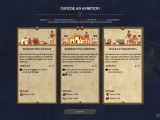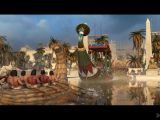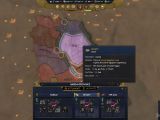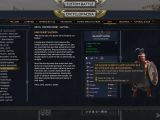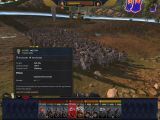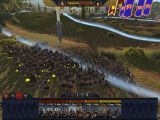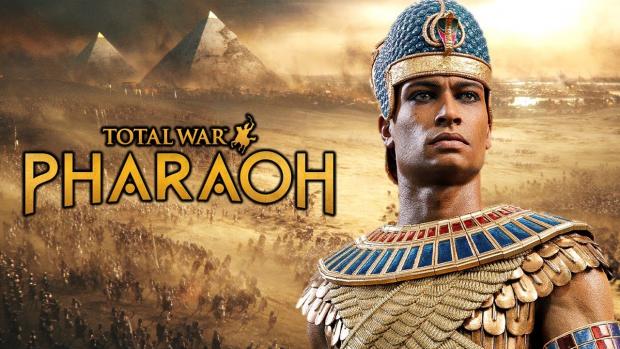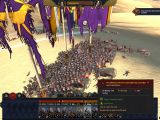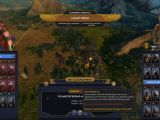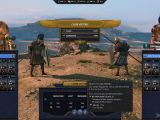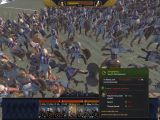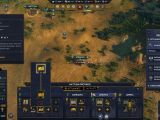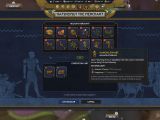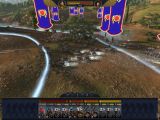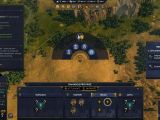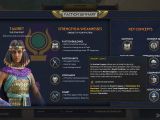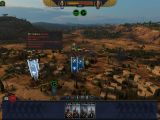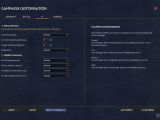My two Canaanite bowmen squads have found a great position, up on a steep hill, and they are raining arrows on the incoming stream of enemies. I don’t want them to focus on any one group, only to sap their force as they move to engage my own line. This should help my axemen, boosted by the might of Irsu, their general, to limit their losses once the two forces clash.
It takes some time and one of my own squads gets routed by the enemy general while pinning him in place, but this is a decisive win. I kill enemy prisoners to get a morale boost and consider where I want to strike next. The faction doesn’t get enough resources from cities, so its generals need to pillage to get extra. The trick is to do it while keeping up momentum, losing as few people as possible, and using army stances effectively.
On the strategic level, Canaan needs a partner that can reliably trade stone. Because of our raiding, plenty of polities are not interested in diplomatic interactions. It might be easier to simply conquer a province and put together a resource chain. We also need to decide whether we want to assault the Hittites or the Egyptians and find ways to secure the country against a stab in the back.
Total War: PHARAOH is developed by Creative Assembly and published by SEGA. I played it on the PC using Steam. The title takes the classic turn-based strategy ideas of the franchise and moves them to the late Bronze Age. Gamers are transported to a historical moment of great turmoil, when many thriving civilizations collapsed in a short period, for periods still not fully understood. As a leader of the Egyptians, Canaanites, or Hittites, the idea is to conquer provinces, develop them, deal with rivals, and become strong enough to deal with the incoming assault of the Sea People.
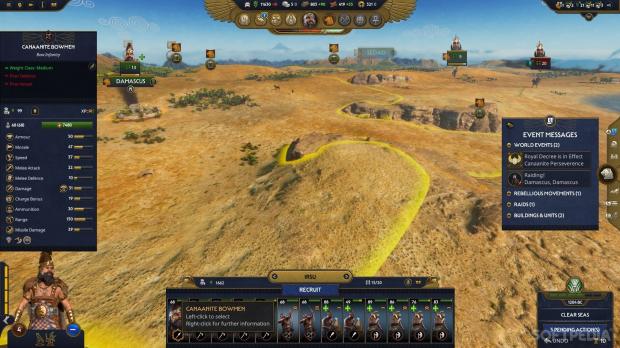
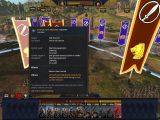
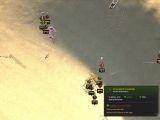
Pharaoh does well to bring this period of history to life, with quotes from the featured leaders and extensive information on units and buildings (take a look at the encyclopedia and then get ready to search for more info). I don’t love the in-character tutorial and system explanations, but I suspect they might work for newcomers. And the variety of Pharaoh’s gameplay means there’s a lot of space for each player to create unique, interesting narratives with each campaign.
As with all other Total Wars, gameplay mixes turn-based strategy with real-time tactical battles. On the map, players develop their regions, which include the classic cities, with buildings that provide resources, recruitment, administrative capacity, and other boosts for the faction. Royal Decrees take the place of a tech tree, and each leader has a special power that can be activated once a year.
Provinces also have places to build outposts. A chain of military ones can allow a big army to move through a region with attrition. Build up as many religious outposts as possible to get bonuses from a chosen deity. Players can also decide to focus on the economy or on landmarks.
Gamers can conduct classical diplomacy, trade resources, and enter alliances. A new Court system adds another layer of politics, allowing players to gain favor with powerful figures or to conspire against them. It’s an interesting addition but it needs extra depth and more connection to what happens on the strategic map.
Players can also adopt various legacies, centered on legendary rulers, that bring even more variety to a campaign. No turn in Pharaoh passes without players having to make a significant strategic choice, either as part of a larger plan or to react to a new event.
This is Total War, so it’s a given that armies will clash. Players will recruit both faction-specific troops and local units. There’s no cavalry yet, so chariots shine for hit-and-run attacks and harassment of missile troops. But most squads move on foot, with a variety of club, axe, kopesh, and spear units to hold and push a line. Skirmishers, archers, and slingers are best used to disrupt formations and weaken opponents before contact.
Generals can use equipment to boost their power and gain new abilities as they level up. And their bodyguards play a big role in any clash. Certain units have stances, opening up extra tactical options. Weather and terrain are also important on the battlefield. The computer is decent in battle, although it is easy to bait its forces and force its flanks. The Bronze Age setting means many units are similar to each other. Battles can become repetitive. That’s why it’s good that the simulation option provides decent results. Take personal command of the biggest engagements and of sieges and leave the computer to handle the rest.
Total War: PHARAOH looks impressive. The strategic map is probably the best-looking one of the series, with a lot of detail for the characters that move across it and the various landmarks. The battles are similarly beautiful, especially when players slow down the action and get close. The colors are vibrant and make characters and units pop. The weather effects are also very solid, especially if they appear on a siege map.
The presentation is enhanced by the audio elements. Battles sound great, even if some of the unit order acknowledgments can become a little annoying. The campaign map’s aural landscape enhances immersion, even when dealing with some of the weaker mechanics. The soundtrack is good enough that I never thought of replacing it with Bronze Age history podcasts.
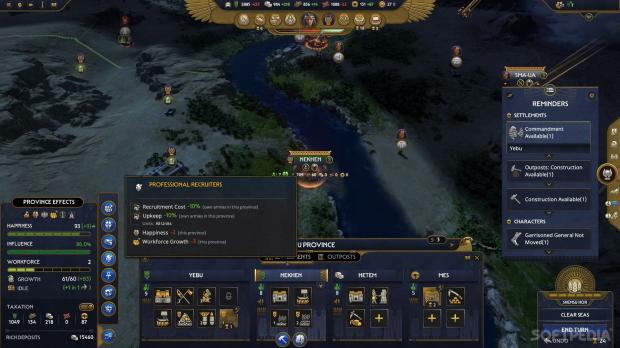
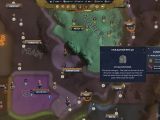
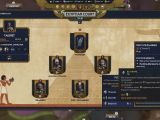
The Good
- Bronze Age collapse setting
- Leader variety
- Chariot-focused battles
The Bad
- Strategic map should cover more areas
- Underdeveloped court politics
- Limited unit type variety
Conclusion
I was also willing to spend time understanding the unique approach that each ruler brings to a campaign and how traditions and gods can enhance an advantage or cover a weakness. I’ll certainly simulate many of the battles while enjoying the crucial ones. Total War: PHARAOH is immersive and varied, a good entry in the series for both veterans and new players.
Review key provided by CD Media.
 14 DAY TRIAL //
14 DAY TRIAL // 